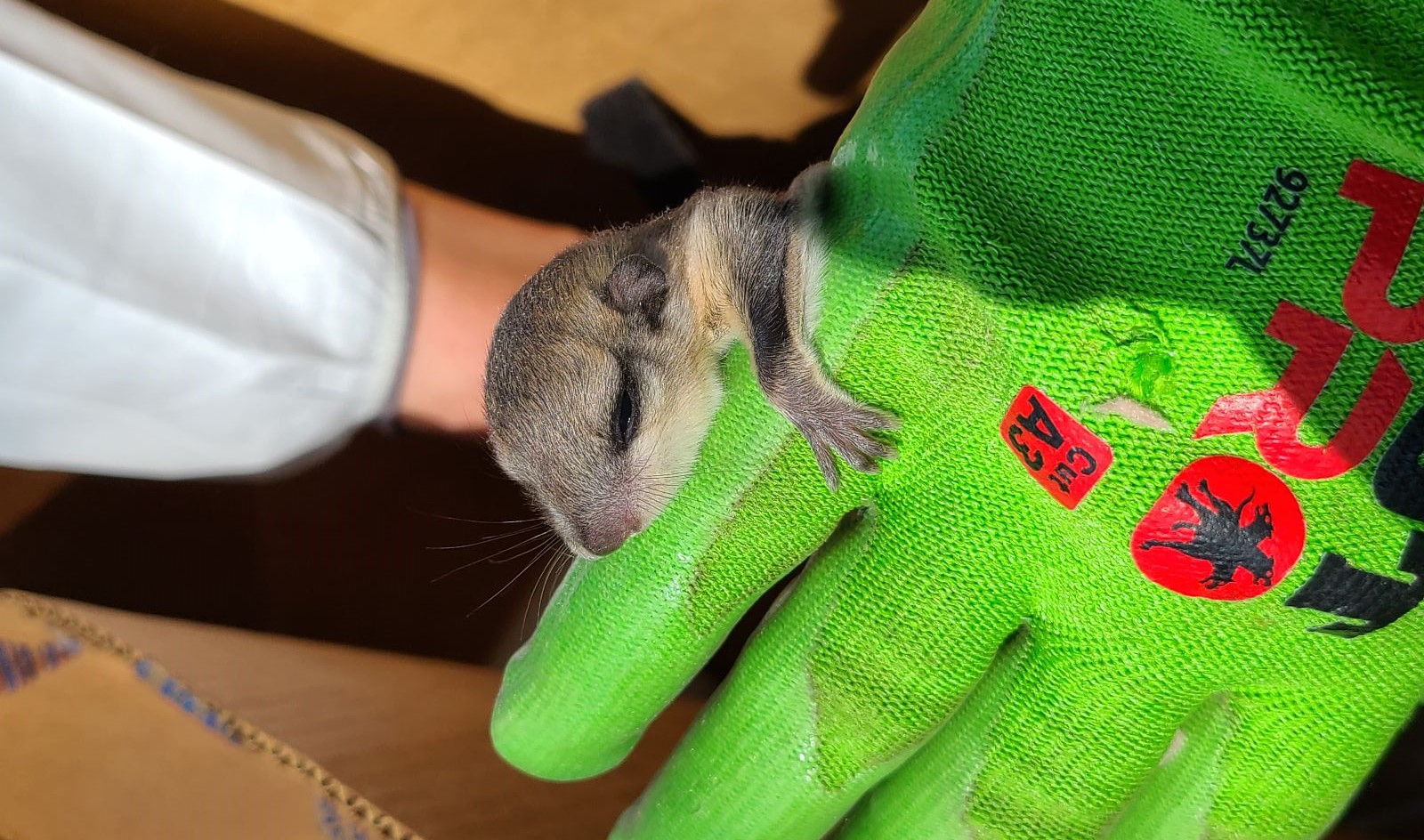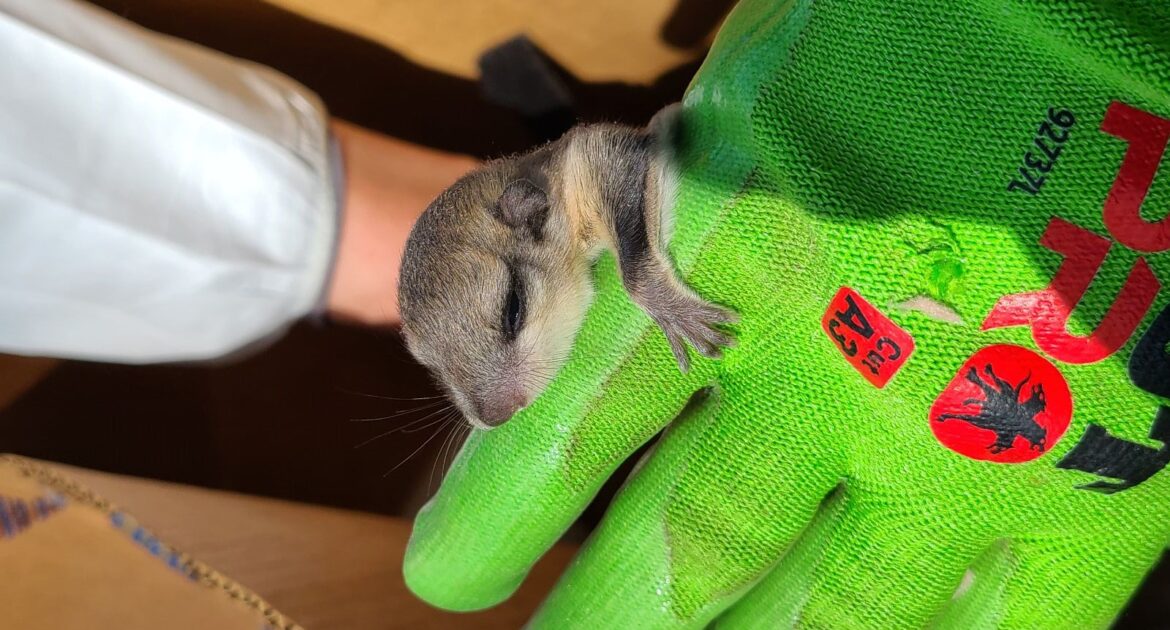When you hear scratching in the attic or notice signs of animals inside your home, it’s easy to think all squirrels are the same. But flying squirrels and regular squirrels behave very differently, especially in where and how they nest. These differences are important when deciding the best ways to get rid of squirrels. That’s why tailored removal strategies are needed—methods designed to match the specific habits of each type of squirrel.
For example, flying squirrel behavioral adaptations include being nocturnal, which means they’re active at night. They glide using a flap of skin called the patagium and often enter through small openings near the roof. Regular squirrels, like gray or red squirrels, are active during the day and typically use larger entry points. Because of these differences, professionals use targeted methods when figuring out how to get rid of squirrels safely and effectively.
At Skedaddle Humane Wildlife Control in Mableton, we provide customized solutions to protect your home and the animals. Knowing the differences between flying squirrels and regular squirrels helps ensure the problem is handled properly without causing harm. Whether the animals in your attic glide at night or run around during the day, using the right ways to get rid of squirrels is key to success. Below, we’ll explain the differences, share removal strategies, and show why professional help is always the best option.
Key Differences Between Flying and Regular Squirrels
Flying squirrels and regular squirrels, while often grouped together, have distinct traits that set them apart. Recognizing these differences can help identify which type has taken up residence in your home.
In terms of appearance, flying squirrels are compact and smaller in size. They possess a loose flap of skin, known as the patagium, extending from their front to back legs, which allows them to glide across distances. In contrast, regular squirrels have a larger body size and a notably bushy tail, with common varieties including gray and red squirrels.
Behaviorally, flying squirrels are nocturnal, with most of their activity occurring after dark. They often prefer attic spaces to nest, especially during colder months when they need warmth. Regular squirrels, on the other hand, are diurnal and are primarily active during the day. They are often seen dashing around yards, climbing trees, or even nesting in attics for safety or convenience.
Regarding entry points, flying squirrels are experts at sneaking into tiny spaces, with openings as small as a dime being sufficient for them to squeeze through. They prefer high-entry sites such as roof vents, soffits, or small gaps near the roofline. Regular squirrels typically access homes through larger gaps or damage, such as loose shingles or broken eaves, focusing on more accessible areas compared to their gliding counterparts.
Understanding these distinctions is crucial for planning the appropriate next steps for safely and effectively removing the animals. Each species requires a different handling approach, as will be explored in the following sections.
Tailored Techniques for Regular Squirrels
Regular squirrels are very active during the day, running around to find food or materials to build their nests. If they get into your home, the first step a professional will take is to carefully inspect the house. This step is important because it helps find all the spots squirrels use to get inside. Professionals know where to look, such as:
- Damaged eaves
- Loose shingles
- Larger gaps where squirrels can squeeze through
Finding these entry points makes it easier to safely remove the squirrels and keep them from coming back. Once the squirrels are out, professionals use one-way exit devices to ensure they can’t return. These special tools let squirrels leave through the openings they’ve been using but block them from getting back inside. It’s like a one-way door—they can go out but not back in. This method is both safe and humane, helping the squirrels return outdoors without stress or harm.
Since regular squirrels are active during the day, the removal process is timed to match their natural behavior. Professionals plan the work for when squirrels are likely outside looking for food, which helps make the process smooth and successful. This understanding of their daytime habits is one reason expert methods work better than trying to do it yourself.
By using methods designed for regular squirrels, professionals protect your home and the animals. Every step focuses on guiding the squirrels out safely and sealing the entry points to stop them from coming back. This approach is effective, humane, and keeps your home secure.
Tailored Techniques for Flying Squirrels
Flying squirrels behave very differently from regular squirrels, so removing them requires a special approach. These small, gliding animals are nocturnal, meaning they are most active at night. Professionals focus on watching their nighttime patterns to figure out how and when they move around your home. By observing their habits when they’re most active, experts can safely guide them out without causing stress or disruption.
Another important step is conducting a detailed inspection of your home. Professionals look closely at:
- Roof vents
- Soffits
- Tiny cracks near the roofline
Flying squirrels are excellent gliders and can squeeze through gaps as small as a dime, so finding and sealing these openings takes careful work. If even one small opening is missed, the animals can get back inside, which is why thoroughness is so important.
After inspections are done and the squirrels’ movements are understood, professionals use one-way exit devices to guide them out safely. These tools allow the flying squirrels to leave but stop them from getting back inside. Experts also take extra care to ensure no animals are left behind, including any family groups. The process often involves checking and monitoring to confirm all activity has stopped. Only then do professionals seal the entry points to prevent the squirrels from returning.
Removing flying squirrels takes a mix of careful observation, precise work, and good timing. By using the right methods, experts can solve the problem without harming the animals or causing damage to your home.
Why DIY Solutions Often Fall Short
Attempting to solve a squirrel problem on your own might seem tempting at first. However, there are several reasons why this often backfires.
- Without professional expertise, it can be challenging to determine whether you’re dealing with flying or regular squirrels.
- Misidentifying the animal can lead to using improper methods that don’t work.
- Sealing gaps or holes too soon, especially while the animals are inside, could trap them.
- Trapping squirrels inside risks further damage to your property and raises serious animal welfare concerns.
- Proper equipment and understanding specific behaviors make a big difference.
- Professionals have the experience to target solutions effectively while avoiding harm to the animals or your home.
DIY approaches, though well-meaning, often fail due to a lack of proper preparation and understanding of the nuances involved. Trusting experienced wildlife technicians takes the guesswork out of the process and guarantees safe results.
The Importance of Professional Help
When it comes to resolving issues with these animals, a professional touch is often the safest, most effective choice. At Skedaddle Humane Wildlife Control in Mableton, we understand the importance of humane solutions that safeguard both your home and the animals. Our tailored techniques focus on resolving the issue while preventing future problems, giving you peace of mind.
By studying their behaviors and adaptations, we ensure each solution matches the specific needs of the situation. From carefully sealing tiny gaps to installing one-way exit devices, our team takes every step with attention to detail and care for the well-being of the family and the animals.
If you’re dealing with unwanted visitors in your attic, don’t wait—reach out to Skedaddle Humane Wildlife Control in Mableton. Our experienced team knows exactly how to protect your home effectively and ethically.
Humane and Effective Squirrel Removal Services
Understanding the distinct characteristics and behaviors of flying squirrels and regular squirrels is crucial for effective and humane wildlife control. These unique animals require tailored removal strategies that respect their natural habits while ensuring the safety and integrity of your home. By employing species-specific techniques, from careful inspections to the use of one-way exit devices, professionals can safely remove squirrels without causing harm or undue stress.
Don’t let squirrel problems persist in your Mableton home. Trust the experts at Skedaddle Humane Wildlife Control to provide a humane, effective, and long-lasting solution to your squirrel issue. Our experienced wildlife technicians understand the nuances of both flying and regular squirrel behavior, ensuring a tailored approach that protects your property while respecting the wildlife that shares our environment. Contact us today for professional, ethical squirrel removal services.




